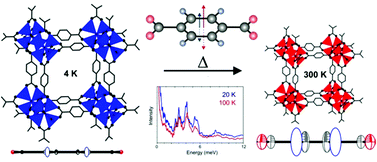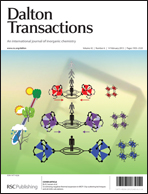Scrutinizing negative thermal expansion in MOF-5 by scattering techniques and ab initio calculations†
Abstract
Complementary experimental techniques and ab initio calculations were used to determine the origin and nature of negative thermal expansion (NTE) in the archetype metal–organic framework MOF-5 (Zn4O(1,4-benzenedicarboxylate)3). The organic linker was probed by inelastic neutron scattering under vacuum and at a gas pressure of 175 bar to distinguish between the pressure and temperature responses of the framework motions, and the local structure of the metal centers was studied by


 Please wait while we load your content...
Please wait while we load your content...